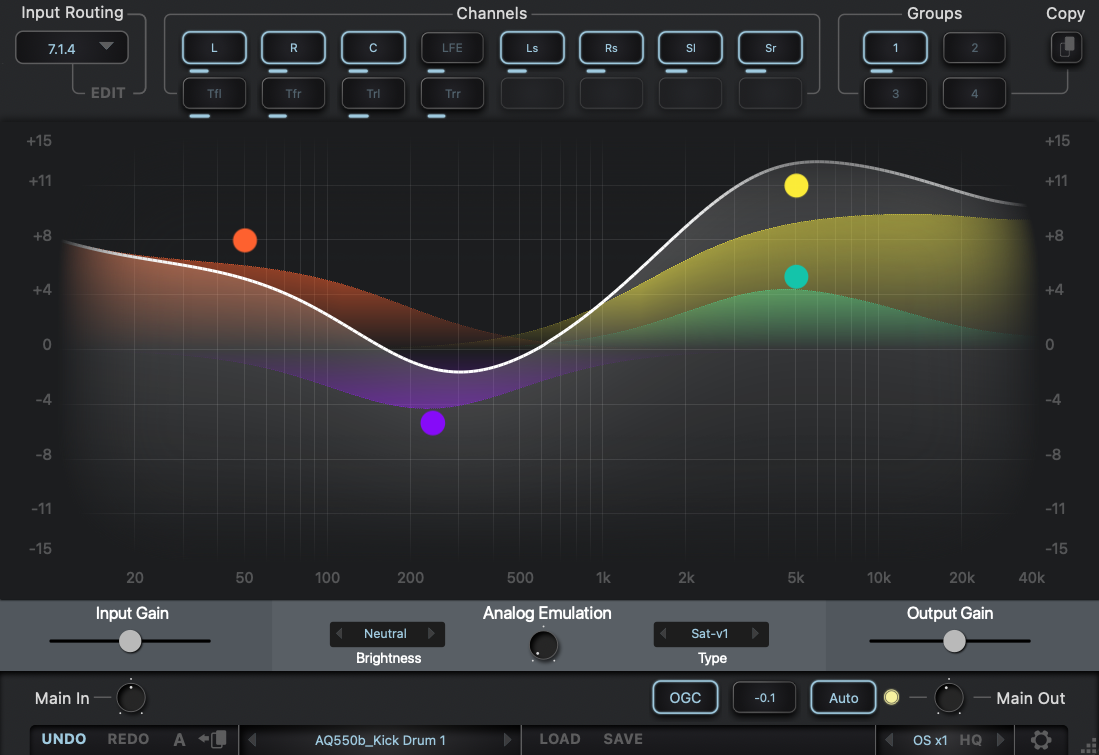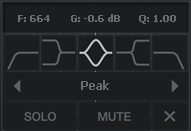Create a legend with your own hands.

uniQ 2 Multimode Filter
Combine the filters of the legendary EQ’s as you want, build analog saturation, get the
original unique sound using uniQ 2.
The uniQ 2 is the ultimate EQ toolkit, with different EQ types and filter shapes, giving you the
best of analogue in an unrestricted and versatile digital environment. Each band is switchable
between bell, shelf, low pass or high pass filter types, so you can create the EQ you need for
the task at hand.
Save time and avoid tedious manual workarounds with uniQ 2 plug-in designed from the
ground up for fast, efficient work on mid/side, stereo and the objects, the beds (fixed
channels) of immersive mixing environments.
Latest Versions
MacOS:
AAX version 1.0.4 (Apr 25, 2025)
AU version 1.0.4 (Apr 25, 2025)
VST2 version 1.0.4 (Apr 25, 2025)
VST3 version 1.0.4 (Apr 25, 2025)
Windows:
AAX version 1.0.3 (Apr 18, 2025)
VST2 version 1.0.3 (Apr 18, 2025)
VST3 version 1.0.3 (Apr 18, 2025)
If you bought uniQ 1, you can get uniQ 2 for free, upon request.
INPUT ROUTING PANEL

Groups
This module allows you to select an equalizer from four available. The equalizers are arranged in series, this allows you to process channels with different equalizers settings.
For example: the first EQ is only the mid channel, the second EQ is only the side channel, the third Eq is the left and right channel. For multi-channel modes: the first Eq is only the left and right channels, the second EQ is the center channel, the third EQ is the LFE, etc.
You can rename Group Buttons for ease of use. To rename the selected Group button, right-click on the button.
In order to turn on the solo (listen) of the equalizer, double-click on the selected equalizer number. The equalizer in solo mode glows yellow, to exit solo mode, double-click again. For two-channel modes, only one equalizer can be solo mode. For multi-channel modes, one or more equalizers can be soloed.
To bypass Eq processing, press the selected equalizer number one click + shift. In bypass mode, the button will glow red.
You can also copy all equalizer settings to another equalizer. To do this, select the equalizer from which you want to copy the settings, then click on the copy button, then select the equalizer to which you want to copy the settings.
Input Routing
Input Routing lets you choose between 44 common channel setups, starting from Stereo up to 7.1.4 and 9.1.6. Simply select in the input routing module the channel setup that fits your track.
You can also create your own input routing profiles. 16 independent channels are available.
Click on the edit button next to the input routing selection display. Hold down the shift button and select the desired number of channels. Name selected channels in order. Then click save and name the profile.
Channels Selection
In this module, you can select (activate) the channels that the equalizer (group) will process.
EQUALIZER SECTION
The initial state of uniQ 2 is without any frequency bands created. To add a frequency band, double-click with the mouse anywhere on the graphical interface. This will create a frequency band node at the click-point, with a curve type dependant on where you clicked on the graphical interface - this can be changed after the node has been created. One Unit section can have up to 5 nodes, those, the 4 Units sections together have 20 nodes. (see Unit Selection)

The node can be dragged around the graphical interface to adjust the gain and frequency of the band, whilst using the mouse-wheel to adjust the band Q factor.
To solo a node, double-click on it with the left mouse button; to mute a node, right-click on it.
Alternatively, you can use the Enhanced Tooltip.

Enhanced Tooltip
When a frequency node is created, the frequency, Q factor, and gain (or roll off on high-pass/ low-pass filters) for that node are displayed in three windows and can be adjusted by mouse wheel or the numerical entry for that parameter.
The Enhanced Tooltip display will disappear when not in use to leave a clean and uncluttered plug-in window; to bring it back, simply hover over the node with your mouse cursor. If the Enhanced Tooltip disappears when clicked, for it to appear again, you need to go outside the node, and then move the mouse cursor over it again.
From the Enhanced Tooltip, the EQ shape and the filter type can be selected, as well as the band solo enable. The ‘mute’ icon is a band bypass for quick A/B, whilst the cross (or ‘X’ icon) deletes the band.
Filters Included in uniQ 2
AQ560 — All Bands (Peak);
AQ550 — LF (Shelf), LF (Peak), MF (Peak), HF (Shelf), HF (Peak);
AQ550b — LF (Shelf), LF (Peak), LMF (Peak), HMF (Peak), HF (Shelf), HF (Peak);
BQ-A — LF (Shelf), LMF (Peak), HMF (Peak), HF (Shelf), (25, 50, 100 Hz), LPF (9, 12, 15 kHz);
EQ173 — LF (Shelf), MF (Peak), HF (Shelf), HPF (50, 80, 160, 300 Hz);
BQ-80B — LF (Shelf), LMF (Peak), HMF (Peak), HF (Shelf), HPF 50Hz;
EQP-1A — LF (Boost, Atten), HF (Boost, Atten);
MEQ-5 — LF Boost (Peak), MF Atten (Peak), HF Boost (Peak);
HLF-3C — HPF, LPF;
EQ3 — All Bands (Peak), 2,5kHz (Shelf), Air (Shelf).
MASTER AND SATURATION SECTION

Input Gain
This fader adjusts the input volume for the selected Unit only. (see Unit Selection)
Analog Emulation
uniQ 2 has five different analog characteristics, The type is selected with a drop down menu for easy comparison between the types, and the brightness is also selected with a drop down menu. Neutral is the position where the color is approximately flat in frequency response, with Bright being a brighter, and Warm being a warmer tonality. Pretty obvious isn't it? :)
A Saturation control determines the amount of the process integrated into the audio signal. Because the DSP process is level dependent, use AGС (see Bottom Setting Panel) in auto mode to compensate for the volume level.
The Input Gain trim can also be used to prevent clipping in the rare cases where clipping may be a problem and bringing up the level of a track for an increased amount of color. This can be useful on material that is hitting close to or at digital zero and on material that has a low recorded level.
The uniQ2 contains five separate saturation types:
1. Sat-v1 is the most neutral sounding process of the five.
2. Sat-v2 has a similar character, but with a fatter bottom and midrange.
3. Sat-v3 is characterized by a more aggressive compression curve.
4. Sat-v4 is even more aggressive. (The effect is a color with a wider frequency range-when
used on a vocal Sat-v4 can reduce sibilance problems by increasing the apparent loudness
of the rest of the signal.)
5. Sat-v5 starts more gently than the other four processes, but becomes as aggressive as
Sat-v5 when the process is at full scale.
Output Gain
This fader adjusts the output volume for the selected Unit only. (see Unit Selection)
BOTTOM SETTINGS PANEL

Global Input Gain
Main Input Gain controls the overall input level of the plug-in input, before all units.
OGC (Output Gain Control)
To activate the Output Gain Control mode, click on the OGC button.
Below is located Compensate display that after a while will show you the level difference. Click on it to compensate for the difference.
Auto Mode
Click on the "AUTO" button to turn it on. If the gain difference is bigger than the "gain tolerance" then the AUTO LED becomes yellow and the plugin actively adjusts the gain (you'll see the knob slowly rotating).
Note: For more detailed settings of the OGC mode, go to "Global Preferences".
Global Output Gain
Main Output Gain Main Output Gain controls the overall output level of the plug-in output, after all units.
Undo/Redo
Undo and Redo functions allow undo and redo of changes made to the plug-in parameters.
A/B
A/B buttons allows you to load two independent settings and compare them quickly.
Preset Display
Factory presets are included in the plug-in installation, installed in the following locations:
Mac: Users\[user name]\Music\Red Rock Sound\RRS uniQ 2\Patches
Windows: C:\Users\[user name]\Documents\Red Rock Sound\RRS uniQ 2
You can save the current settings as the Default preset. - Full Reset – is the default preset
Load
Load button allows loading of presets not stored in the locations described above.
Save
Save button allows for save of user presets.
Oversampling
OS x_ activates 2x, 4x or 8x oversampling, 1x disables oversampling.
(note that when the HQ mode is on, CPU will be loaded more than usual).
HQ mode (HQ)
HQ mode is for oversampling, it adds a higher order antialiasing filter. It improves processing quality, but also leads to an increase of the CPU load.
Global Preferences
Button opens Global Preferences menu.
AGC SETTINGS
RMS TIME
By default, the RMS time (the averaging time for loudness calculation) is set to 2 sec. You can change it from 0.6 sec to 10 sec when the time indicator is displayed.
FILTER TYPE
Flat
This means that the signal is not processed (Flat) or filtered before measuring.
K-Weighted
This means that the signal is filtered (K-Weighted) before measurement (it's used by default).
SUSPEND COMPARISON
It is useful when you're in AUTO mode and your track has silent areas.
By default when "Suspend comparison" is enabled and the signal is very low, the plugin will not perform any activity (will not compare levels, cause the signal is too low, and will not adjust the gain in the AUTO mode).
By default the threshold for "suspend comparison" is set to -60 db.
AUTO
Auto gain tolerance (the amount of gain difference that makes AUTO active).
The right value is the maximum value of gain that AUTO can apply.
Maximum Positive or Negative Gain Adjustment
Use separate limits for gain adjustment allows you to set negative and positive auto limits independently. This way you can have AUTO adjustments ranging (for example) from -20 to +10 dB, or from -18 dB to +4dB, etc.
D3D / OGL / CPU (Windows)
This switch allows you to choose between GUI rendering engine:
Normally, no need in switching rendering mode manually, plug-in try to initialize D3D9 then OGL (if D3D9 failed) and CPU (if OGL failed) automatically. But if you have problems with the GUI, you can manually switch and test different rendering methods at work.
This switch is available only in the Windows version of the plugin. For the Mac version, this is not necessary.
Note: Drivers of some video cards (for example, Intel Arc A380) in D3D mode adversely affect the plug-in (periodic noise or whistle), if you encounter a similar phenomenon, use OGL or CPU.
SIMD optimization
This switch enables or disables SIMD optimization, it can be used by multichannel processing with high oversampling. It is undesirable to use in mono and stereo modes, SIMD only slows down the plug-in due to the overhead of splitting the data for optimization.
(Currently in beta testing)
SIMD MacOS
- In the ARM version, you can enable or disable NEON;
- In the Intel version, you can enable or disable SSE2.
SIMD Windows
- In the Intel version, you can enable or disable AVX (if supported), or SSE2.
The Windows version has a limitation: if the CPU does not support FMA, then the optimization will not work, even if AVX or SSE2 is supported.
Note: Enabling/disabling SIMD is saved in the project for each plugin individually. i.e. if a specific instance of the plugin slows down, then you can enable SIMD for it, and others, if they are in the project, will not be affected by this optimization.
COMPATIBILITY




System requirements
All Red Rock Sound products require a computer with appropriate DAW host software (none of which are included).
Plug-in Activation requires Internet connection!
You can go offline as soon as plug-in is successfully activated.
Versions from 1.0.0 and newer of the Red Rock Sound plug-ins have the following minimum requirements:
Mac OS X 10.14.6 or higher for AU.
Mac OS X 10.14.6 or higher for VST.
Mac OS X 10.14.6 or higher for AAX. Latest version of iLok license manager.
Windows 7 or higher (Windows XP not tested).
Mac: Intel Core i3 / i5 / i7 / Xeon / Full Apple silicon support (M1 or higher).
Windows: Intel Core i3 / i5 / i7 / Xeon / AMD Quad-Core or newer.
In theory, any AAX, VST, VST3, AUv3 compatible host application should work. However, due to plug-in host differences between DAWs - and our own rigorous testing standards - we only officially test our plug-ins and instruments in the most recent versions of Pro Tools, Logic Pro, Cubase, Ableton Live, Studio One, Reaper, and Bitwig. Red Rock Sound plugins are not tested in non-listed systems, but they most likely work as long as the system requirements are met. We cannot guarantee a solution for issues in unsupported systems.